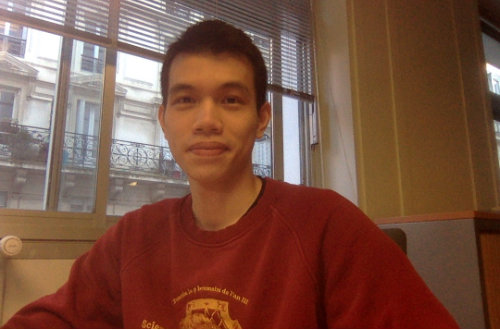Précédents séminaires
- 18/03/2025 • Enhancing wireless communications using Machine Learning
- Guy Anthony NAMA NIAM, Doctorant
- 18/02/2025 • Introduction à la crypto post-quantique
- Pascal LAFOURCADE, Professeur
- 17/12/2024 • Pairing-Free Blind Signatures from Standard Assumptions in the ROM
- Ky NGUYEN, Doctorant (ENS)
- 19/11/2024 • Shaken, not Stirred - Automated Discovery of Subtle Attacks on Protocols using Mix-Nets
- Dhekra MAHMOUD, Doctorante
- 15/10/2024 • Anonymity Model and Design of Different Signature Types
- Charles OLIVIER-ANCLIN, Doctorant
Today, wireless communication networks face numerous challenges, such as ensuring quality of service (QoS) in terms of throughput, latency, and quality of experience (QoE), while also guaranteeing reliability and massive access for users. The proliferation of connected wireless devices generates a huge volume of data, particularly with the surge in popularity of multimedia services (streaming, video conferencing, etc.). It is therefore essential to design next-generation networks (NGN) to...
Dans cette présentation, je présenterai pourquoi l'ordinateur quantique va changer le paysage cryptographique. Je montrerai aussi les différentes solutions pour la cryptographie post-quantique.

Blind Signatures are a useful primitive for privacy preserving applications such as electronic payments, e-voting, anonymous credentials, and more. However, existing practical blind signature schemes based on standard assumptions require either pairings or lattices. We present the first practical construction of a round-optimal blind signature in the random oracle model based on standard assumptions without resorting to pairings or lattices. In particular, our construction is secure under...

Mix-Nets are used to provide anonymity by passing a list of inputs through a collection of mix servers. Each server mixes the entries to create a new anonymized list, so that the correspondence between the output and the input is hidden. These Mix-Nets are used in numerous protocols in which the anonymity of participants is required, for example voting or electronic exam protocols. Some of these protocols have been proven secure using automated tools such as the cryptographic protocol...
Security models provide a way of formalising security properties in a rigorous way, but it is sometimes difficult to ensure that the model really fits the concept that we are trying to formalise. In this paper, we illustrate this fact by showing the discrepancies between the security model of anonymity in linkable ring signatures and the security that is actually expected for this kind of signature. These signatures allow a user to sign anonymously within an ad hoc group generated from...


